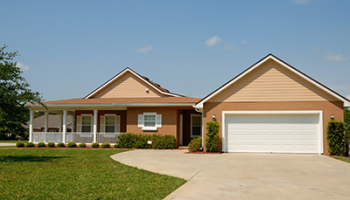Ultimate Guide to USDA Mortgage Loans
A USDA (United States Department of Agriculture and Rural Development) loan, also known as a USDA Rural Housing Loan Program, provides a 30-year mortgage on fixed rates. This mortgage is created specifically for:
• Low and modest income earners.
• People who want a primary residential home in rural Pennsylvania.
• Residents who are otherwise ineligible for traditional housing loans.
Criteria to Apply for This Program
We sat down with Williamsport mortgage company Principle Home Mortgage to discuss USDA Mortgage Loans. D. Shane Whitteker is the owner and chief broker at PHM.
“Overall, the USDA mortgage has a lot of advantages but is more difficult to qualify for,” Whitteker says. “It is important to make sure your credit and finances are managed well if a client plans to use this mortgage.”
To be considered for the USDA program, you must:
• Meet the income eligibility stipulations. These differ county to county. “Contact your local mortgage broker to learn about limits in your area,” Whitteker advises.
• Intend to occupy the home as your primary residence. You cannot use this program to purchase a property for investment purposes or as a vacation home.
• Be a qualified permanent or non-permanent legal alien, U.S. citizen.
• Have the legal capacity to incur the loan’s obligations.
• Have not been debarred or suspended from participating in federal programs.
• Show evidence that you have the capacity to meet credit obligations in a timely fashion. For one, you must have a dependable source of income for at least 24 months. Secondly,your proposedhousingpayment should beequal to or less than 29% of your gross income. Your total debt ratio should not exceed 41%. The system can override the debt to income thresholds but strong compensating factors would need to exist for this to happen.
• Seek to acquire a property that meets the USDA program criteria. Some of the USDA criteria include:
•Areas that qualify on the eligibility map provided as a tool from the USDA.
“A USDA mortgage loan is based on geographical location,” Whitteker says. “Not all areas qualify, as it is designed to help borrowers in more rural areas.”
Features of the USDA Loan
1. According to Whitteker, a significant advantage of the USDA loan is that it requires alow downpayment. In fact, a buyer can finance up to 100% of the property’s cost and have the seller cover 6% of the sales price as seller assistance towards closing costs.
2. In general, the USDA loan has some similarities with the FHA as far as property guidelines go. The USDA mortgage has a lower funding fee (similar to an upfront mortgage insurance premium on FHA). The monthly insurance on this mortgage is also less on this than FHA and other high loan value conventional loans.
3. On average, you pay lower interest rates on a USDA mortgage than on other conventional loans.
4. The loans are both for new and existing properties. Unlike most loans, you do not need assets to qualify for a USDA mortgage loan.
5. In Pennsylvania, there are no maximum loan amount caps.
Income Computation
As with most loans, the qualificationforthis mortgage takes income into consideration. However, a USDA loan factors in the gross income from all adult household memberswhen considering the income eligibility ceiling. This is not the case for debt ratio qualification though, only the borrowers on the loan application are used in the income calculation for qualifying debt to income ratio.
If your income is too high to qualify for the USDA loan outright, there are certain allowable deductions that you can apply for to adjust your income downwards. These apply if you have the following circumstances:
• You are caring for household member(s) with disabilities.
• You have a child that is incurring child care expenses.
• You have dependents.
• It is an elderly household.
• You have medical expenses.
USDA Loans, Credit Scores, and Credit Histories
For a manually underwritten loan, you need to have a credit score of 640. However, for;
Credit score under 640
The underwriter is advised to be cautious. Unless under other circumstances, an applicant with a credit score of below 640 is generally considered to have an unacceptable credit reputation.
Little or no credit history
The lack of a credit history can be overlooked if as an applicant, you document your willingness to pay recurring debts through third party verifications and canceled checks. For objectivity, your relatives or relatives of other members of your household are impermissible to act as yourthird partyverifiers.
According to Whitteker, it is also important to know your DTI, or debt-to-income ratio.
“Debt to income ratios aremore stricton this type of loan. It’s important to make sure you are pre-approved for this type of mortgage before planning to use it,” Whitteker says.
How Can The Loan Funds Be Used?
Once approved, loan funds can only be used for:
1. New or existing houses to be used as primary residences by successful applicants. Further, they can be used to settle closing costs as well as customary expenses related to the home purchase.These costs may not exceed the appraised value aside from the funding fee. The loan amount can be as high as the appraised value and the final loan amount that includes the funding fee may exceed the appraised value but not by more than the cost of the funding fee.
2. A site with existing or new properties.
3. Repairs and renovations done in line with the purchase of an existing house.
4. Special features to accommodate a member of the household living with disabilities.
5. Reasonable assessment and connection fees for utilities such as water, sewer, electricity, and gas.
6. Essential home equipment installations such as HVAC, refrigerators, washer, and dryers.
7. Installation of broadband services as well efficient energy such as solar panels.
8. Site preparation costs such as paving, walkway, fences, driveways and so on.
How To Apply For A USDA Loan
1. Find a lender approved for the USDA program, like Williamsport broker Principle Home Mortgage.
2. Get prequalified: depending on your lender, this can be done over the phone. Generally, a lender will let you know what you can afford and if you are eligible in the first place.
While getting approval at this stage does not necessarily mean your loan will be approved, it can help you get a clear picture of your chances of approval. Some lenders allow you to upload your pre-qualification documents online.
3. Make a pre-approval application: here, your lender will verify your information and purchasing power. If all goes well, they will issue you with a pre-approval letter which gets you a step closer to getting your loan.
Depending on your credit score and income, you might get an automatic approval on your loan, if not, then your lender can go the manually underwriting route, with slightly more stringent rules.
4. Find a USDA approved home.
5. Wait to be underwritten.
6. Close on your loan: once your lender and USDA sign off, you will receive a Clear to Close, which is the last step to you getting your new home.
The mortgage experts at Principle Home Mortgage in Williamsport are equipped to help you answer any questions you may have on USDA mortgage loans as well as take you through the process. Contact them today to learn more.
VA Home Loans In Williamsport: A Primer
If you're looking for a Williamsport VA home loan, this article will give you a solid foundation. VA home loans - in Williamsport or anywhere else in Pennsylvania - are one of the best ways to obtain a home mortgage.
Step-By-Step Guide to Being a First Time Home Buyer
As a first time home buyer, you'll have a lot of questions. Check out our Williamsport First Time Home Buyer Guide for answers.
First Time Williamsport Home Buyer Mortgage Tips: The Inside Scoop
If you're considering buying a home in Williamsport - or anywhere else in Pennsylvania, you're guaranteed to learn something new in this informative guide.



